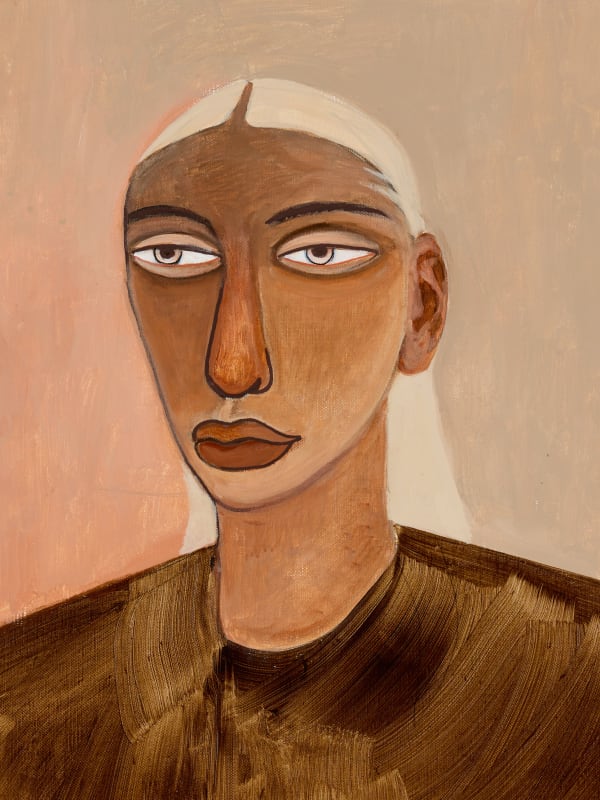A group exhibition with Anuk Rocha, Diego Boonen, Jamel Armand & Bob Geerts.
In the group exhibition Figuratively Speaking, Galery Hioco Delany presents the work of four self-taught artists who have developed their own unique visual language in a relatively short time. Gallery owners Keith Hioco and Mark Delany selected the work of Dutch artist Bob Geerts, Dutch-Indonesian painter Jamel Armand, and German artist Anuk Rocha. The fourth artist, Diego Boonen, returns to the gallery for a second time.
In art, the word 'figurative' has a clear meaning: 'that which follows reality, that which is recognizable to the viewer.' The familiar feeling embedded in the unique visual language of these four artists is one of the unifying themes in the group exhibition. But 'figuratively speaking' also refers mainly to the way we use words and sentences with a more imaginative meaning than usual. Each work originates from a narrative power, an extra layer of meaning or ambiguity, which becomes evident through the mystical and naive character of the exhibited paintings.
Bob Geerts (b.1990) lives and works in Eindhoven. Geerts began his artistic career as a tattoo artist and has been working under the artist name Bobeus for more than 13 years. Seeking more artistic freedom, he began experimenting with painting in 2022. Geerts is strongly influenced by early 20th-century Russian avant-garde art. By linking his work back to his background as a tattooist, the painter created his own visual language that makes viewers daydream. Geerts describes tattoos as the 'ultimate figurative speakers' due to their strong, ultra-personal meaning and infuses his own work with the stereotypical symbolism of classic tattoos. In FIGURATIVELY SPEAKING the artist uses snakes as a multi-layered symbol, representing the inner struggle of humankind. The snake encapsulates many meanings, from fear, to seduction and transformation, and emphasises the duality and contradiction of emotions.
Jamel Armand (b.1978) lives and works in The Hague. Armand has a background in animation and began painting six years ago. The artist's Indonesian roots are the starting point of his work. Armand sees his painting as a tribute to his ancestors and an exploration of his heritage. The artist's visual language is mainly influenced by the visual identity of Indonesian tribes but gains a contemporary undertone through intuitive use of color and playful compositions. The color palette that brings together earth tones and brighter colors, and the recurring elements (such as the mohawk and snake), have a double symbolism that reflects both the pride and sorrow inherent to people with foreign roots.
Anuk Rocha (b.1986) lives and works in Marseille. Rocha is of Bosnian Romani descent, grew up in Germany, and studied Fashion Design in Paris. During her studies, she discovered her love for composition and color. In 2022, Rocha began her artistic career as a painter. Today, the artist is known for her stylistic portraits of statuesque women with strong expressive faces. Rocha chooses not to plan but to work intuitively. The meaning in her work is therefore not found in direct references, but in the humanity and the expression of her figures, as well as in her use of color. In this way, Rocha creates her own world of mysterious figures with a calm, desirable appearance.
Diego Boonen (b.1993) lives and works in Antwerp. In his short career as a painter, Boonen has managed to create a recognizable style. With the naive images that the artist exhibits in his work, Boonen explores his own imaginative retelling of history. His oeuvre thus offers a dreamy escape from the contemporary world. Boonen is the only artist in this group exhibition who does not show portraits but opts for strongly staged images of boxers and runners. The artist drew inspiration for these works from historical photographic material.
All the works in the group exhibition are part of their own story in a place created by the artists themselves. Each painting thus becomes a window into a nonexistent world with its own characters and sensitivities. The naive style that encompasses these four painters brings simplicity and uniformity to the exhibition.
Text by Jens Roothoofd




